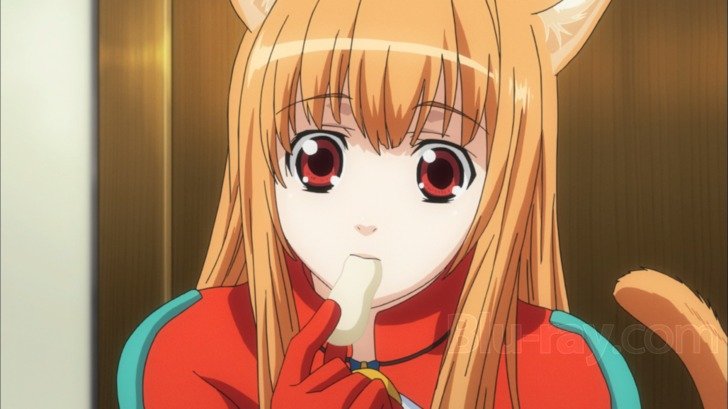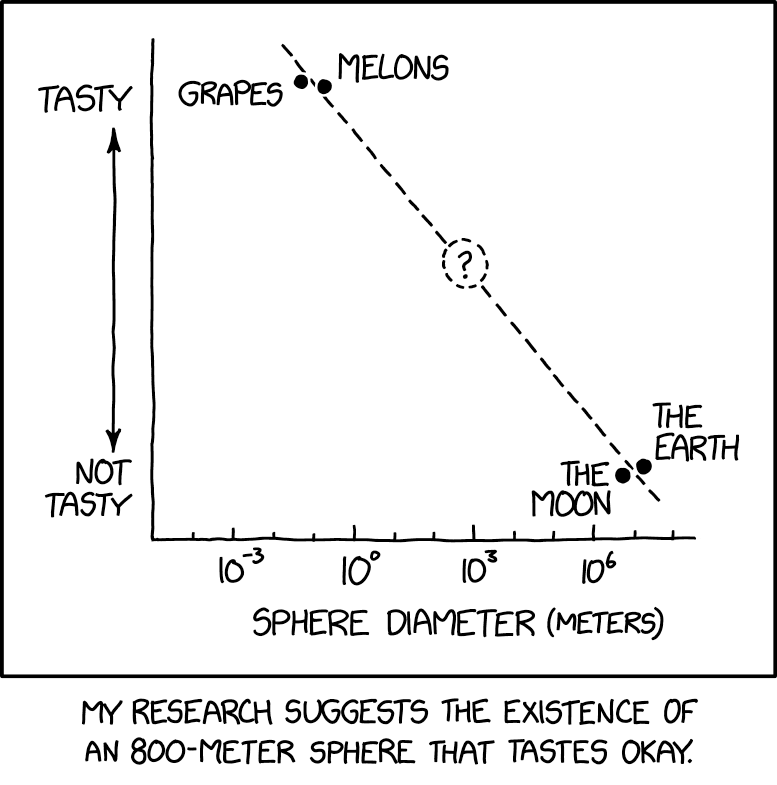It’s fair to say that the past decade has been a little light on the Anime Almanac front. I burned out on the blog mid-way through 2010 and then life hit me hard when I lost my job at the start of 2011. But I bounced back, and ultimately ended the decade married, at the top of my professional career, and raising my first child.
While anime was not at the forefront of my decade, it still kept a very steady hum in the background. I kept my Crunchyroll subscription active the entire time, and eventually joined Funimation Now and (reluctantly) HI-DIVE. My wife and I would somewhat regularly attend anime cons. And since the birth of our son, we reserve all of our baby sitter time to go to see one-night-only anime Fathom events.
I would also tweet every few months, usually to make some kind of dumb joke or point out some fantastic Engrish. In 2016, I started noting my top 10 anime of the year. At first just one list at the end of the year, and then one thread that I update after every season. It was a good way to keep myself updated on the latest series while also reaching out for recommendations on what I was missing.
Here are the lists for those four years.
I guess you could technically go through those lists and create a top anime of the decade list as I have seen so many other do, but frankly, I miss a lot of my favorite series the first go around and only get see them in the year or so after they were released.
That is why I decided to take some time to think about the decade as a whole and call out some specific titles and clearly defined the decade for me.
5. Cat Planet Cuties and Comfort in Cute Girls
Okay, so Cat Planet Cuties, released Summer 2010, was not really the anime series that defined my decade. It represents the kind of series that I enjoyed the most during the downtime of my fandom. No matter what was happening in life, I could always turn to the kind of anime that have been a comfort to me ever since I was a teenager.
That kind of anime being – of course – something with a lot of pretty girls and fanservice.
I mean, this is Anime Alamanac, after all. I am the blue-haired cat girl avatar. I have built my reputation on this type of stuff. A mortgage and diaper money isn’t going to change that.
These series would often show up in my top ten lists, a few even taking the top spot. But most of them would not because they are not good series. They are okay series. And an okay series with cute girls and fan service is all I really need.
Along with the cat planet girls, this decade also provided us with:
- Chu-bra!
- To Love Ru
- Is This a Zombie?
- Hanasaku Iroha
- The Familiar of Zero
- Mysterious Girlfriend X
- Love, Chunibyo & Other Delusions
- Listen to Me, Girls. I am Your Father!
- Date-A-Live
- Golden Time
- Is It Wrong to Try to Pick Up Girls in a Dungeon?
- My Wife is the Student Consiual President
- Shomin Sample
- Amanchu!
- Flip Flappers
- New Game
- Fuuka
- Seiren
- Tsuki ga Kirei
- Angel’s 3Piece
- BlendS
- My First Girlfriend is a GAL
- Interview with Monster Girls
- A Center’s Life
- Uma Musume Pretty Derby
- Dagashi Kashi
- Harukana Recieve
- A Ryuo’s Work is Never Done
- Rascal Does Not Dream Bunny Girl Senpai
- How clumsy are you, Miss Ueno
- How Heavy are the Dumbells You Lift?
- Helpfull Fox Senko-san
- O Maidens in Your Savage Season
So as long as anime continues to provide cute girls and fanservice, I will continue to be an avid fan.
4. Dragon Ball Super and the Power of Resurrection

On January 7, 2017, I got to experience something I hadn’t done since high school – watch a brand new episode of Dragon Ball on Toonami. Dragon Ball Super brought the classic series back on TV with brand new series arcs, characters, and long drown out episodes where very little progress was made.
Watching the series on TV became a ritual for me every week from that January debut up until it wrapped just a couple of months ago. The difference this time was that now my wife was reluctantly along for the ride. I’d often explain to her the 30 years of backstory as old characters become reintroduced, and we’d both complain about just how slowly the series moves on week-by-week.
It also kept the world enthralled as the originals aired in Japan two years earlier. I was amazed to see an older man watching a new episode on their smartphone while I was on a subway in China. It was bringing something back to all of us who grew up on it.
But the resurrection of Dragon Ball in this decade also provided something I never got the chance to do as a kid, and that was watch DBZ up on the big screen. We got three movies this decade from the franchise – and all three of them saw nationwide distribution on the big screen. Every screening I attended was packed, and at some point in during the movie, I would find myself thinking, “Am I really watching a new Dragon Ball movie in an actual movie theater?”
I really hope Dragon Ball continues to provide new movies and TV shows in the new decade. I’m looking forward to being to watch it with my son when he gets older.
3. Devilman Crybaby and the Golden Age of TV

Without a doubt, Netflix was the single biggest entertainment story of the decade. When they introduced their first original series, House of Cards, in February 2013, it changed television. Prior to that launch, HBO held the monopoly on high concept, big-budgeted TV shows. But now that Netflix flexed its technology muscle into that space, it was open season for creators to get the funding they need for their niche projects. This has resulted in what most TV critics call the golden age of TV.
Netflix did not completely disrupt the anime industry. Crunchyroll was lucky enough to jump in during the rise of YouTube, and they perfected the model of simulcasting anime shows as they went to air in Japan. But as the Netflix wave started gaining momentum, Funimation joined the streaming war and added English dubbing to the simulcasting equation.
This solidified simulcasting as the standard for anime distribution, and it is not the standard Netflix sets with its model. You will often see fans lash out against the service for not simulcasting new series and forcing them to wait for months to watch it.
However, if you can look past that wait time and really look at what Netflix has tried to do in anime, it is wonderful. Devil Man Crybaby, released the first week in 2018, is exactly what anime could like in this golden age of TV.
Masaaki Yuasa, a man known for his distinct style in anime, adapted an old Go Nagai comic for the streaming service. The 10 episode series launched all at once on the same day around the world, and it hit the anime community like a bomb for those few weeks. Yuasa freestyle animation mixed in with Nagai’s gore and titillation was the perfect blend for the mature anime fan, and the critics loved it.
This series was unbounded by the traditions of standard anime, and even brought up hints of Evangelion with its grandiose ending.
And speaking of Evangelion, Netflix also deserves a lot of credit for bringing the original show and movies from the 90’s back into the national conversation earlier this year. While the rebooted movies have been mostly duds, the original show still holds up. We also saw a lot of coverage in mainstream media now that the golden age has made that audience open to experiencing niche markets such as 90’s anime.
So while Netflix has yet to disrupt anime, it is a change that really should be happening.
By the end of the decade, both Crunchyroll and Funimation were acquired by Warner Media and Sony respectively. It was a ploy for those media giants to expand their streaming portfolio to compete with Netflix. While the two platforms continue to remain independent, it is hard to say how long that can continue.
2. Re:ZERO and the Decade of Isekai

Isekai, the genre where an average person is transported into a fantasy world, dominated anime in the 2010’s just like moé dominated the decade before it. And also just like moé, a vast majority of the content created was utter crap. But out of everything that the genre put out throughout the years, there was one series that perfected the genre in looks and execution.
On my first viewing of Re:ZERO, I fell completely into the video game inspired narrative of the protagonist restarting at an earlier part of the story after he dies. I know this is not the first “Groundhog Day” story we have seen recently. In fact, the Japanese novel “All You Need is Kill” was adapted into a fantastic Tom Cruise Hollywood movie in 2014. But the gimmick is still a great one and the fun of learning where the “save points” are throughout the story kept me hooked on every episode.
On my second viewing of the series, I figured out what was really the highlight of the series:
There are a lot of girl characters in this series,
and every single one of them is adorable.
The main characters. The side characters. The villains. Even a catgirl who they claim is supposed to be a boy. They would all easily be the cutest girl character in any series, and yet, they are all here together in one single show.
Again, I cannot stress how much the isekai genre has been a pox on the medium for the past ten years, and I dread every time I see a new ridiculously long title appear on the new anime list every season.
But god damn, I love this series. And I can’t wait for the next season next year.
1. Shelter and the Beauty of Anime
This music video created by American DJ Porter Robinson, French DJ Madeon, and anime studio A1-Pictures is the most beautiful six minutes ever animated. My jaw drops every time a watch it, and I ask you to please watch it as well.
We are first introduced to the cute character designs as the pretty girl rolls around her bedroom in pajamas. A cute teddy bear and lots of puffy pink pillows fill the screen. This would have a typical slice-of-life anime feel to it if it wasn’t for the fact the only thing she is doing is goofing off her tablet computer. It is a scene probably more true-to-life in the modern world than anything we would normally see in anime.
The catchy melody of nonsense from an autotuned girl brings out notes of Hatsune Miku and j-pop while still keeping within the Avicii / Calvin Harris / David Guetta EDM landscape that dominated the first half of the decade.
We are then taken to a Mokoto Shinkai inspired world as the girl begins to create gorgeous landscapes through her tablet. A big blue sky over canyons, icicles and a snowy mountain, the northern lights. She is living in a digital world that she is in complete control over, and her imagination is flourishing and she gleefully explores it.
Madeon’s verses mellow the song from the high of the melody, and there is now a whiplash as the final act of the video tells the tragic backstory through a series of flashbacks.
Bit and pieces show the life of an innocent Japanese girl being raised by a single father. Grade school outfits, shrine visits, playing on the swingset. The father watches over the girl as she remains happily ignorant of a pending asteroid heading to earth.
The song’s lyrics provide visions of a parent providing shelter to their child, which are all the more tearjerking when paired with the story of the video.
The father’s final act of protection is creating a space ship and a digital purgatory for his daughter to emotionally and physically escape to while he and the rest of the world parishes. It ends with the girl thankful for her father’s sacrifice as she drifts alone in space.
The visuals, storytelling, and music of this video are simply stunning. This is the best that the medium has to offer, and it is all thanks to the collaboration of artists across three continents.
A lot of naysayers and purists will have objections to the western creators’ involvement in the project, and that is a shame. The only reason why the video is so great is because of the outside influence. It reaches beyond what most anime can be.
When I look back at the past decade in anime, I can always count on the traditions of the medium to continue to be there and continue to entertain. Whether it be the dudes with the spikey hair or the pretty girls, there will still be the comfort and nostalgia of old.
But the times where anime really sticks out is when it breaks from traditions and moves into new territory. Fans need to embrace the change and support it. This evolution is amazing, and I am looking forward to seeing what the next decade provides for us as well.



